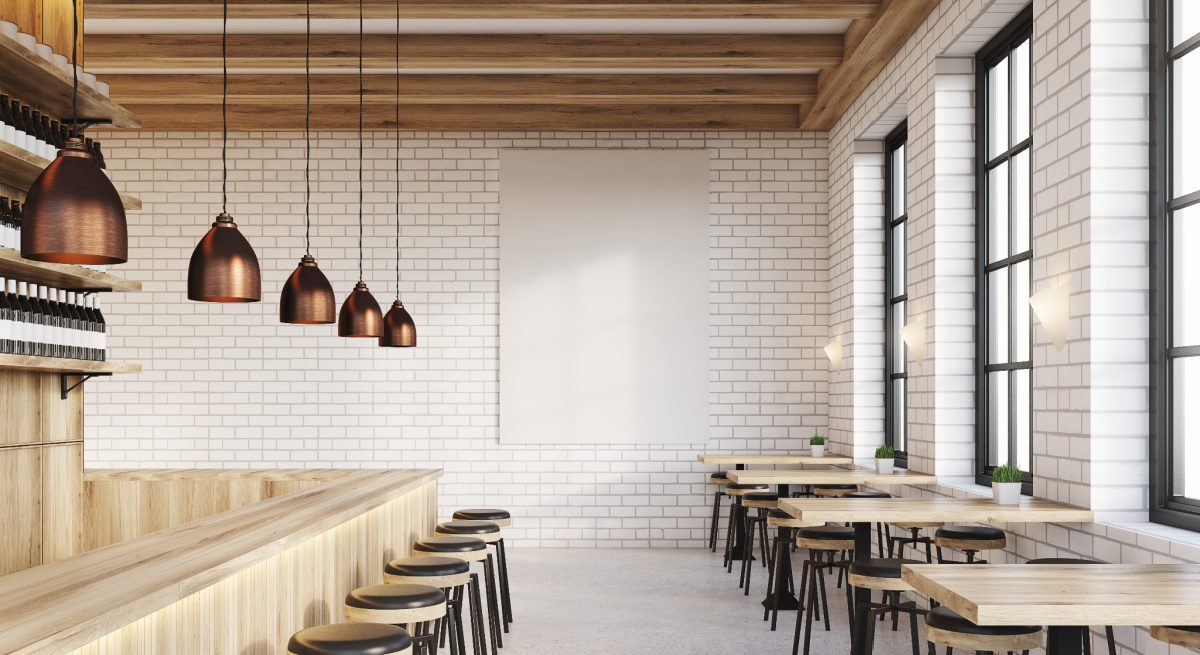10 Tips for Designing Your Restaurant Interior
4 Min Read By Jeremy Lewin
For people considering operating a restaurant, besides a great menu, the aesthetics of the restaurant must also be tackled. One key reason why many restaurants fail despite having great food is failing to consider the restaurant design.
Restaurant interior design is the key to attracting customers. It should be like a magnet for guests, promising them both an exceptional culinary and sensory experience . So if you have just bought a restaurant or are starting from scratch, here are some tips on how to design a restaurant interior:
1. Develop a Layout Plan
Before you make any type of physical change, it is important to create a layout plan. The layout plan should give you an idea about the location, size, and setup of the furniture. For example, you want the washroom to be at the side and the kitchen at the back. Besides, you want to maximize the space near the windows. There should be clear paths for both customers and servers.
2. Create a Stunning Entrance
One way to attract customers to the restaurant is to have an entrance that is an eye-opener. The entrance should be unique, classy, and inviting. The restaurant name should be bold and visible from the road. Make sure that the entrance matches the theme of the restaurant. For example, if you are serving Indian food, then the entrance can have colorful and decorative images of spices and herbs. But if you are serving seafood, then you may want to consider using a water/ocean themed entrance.
3. Focus on the Demographics
When planning a restaurant design consider who will be your customers. For example, if you are targeting college students and teenagers, you may want to use bright and bold colors, with music-based wallpaper and retro furniture. The corner bar should have funky decorations with tiki lighting features. On the other hand, if you are targeting business people, then keep the design modern, clean and chic. Use light-colored furniture with padded banquet chairs. The furniture should look appealing and neat.
4. Light it Up for the Customer
When it comes to a restaurant, lighting is vital and should involve a combination of both electric and natural light to induce a soothing effect. Further, the right light colors are important as they influence human moods and emotions. Make sure the lights can be adjustable to match the space, colors, and time of the day. For late evening meals, for example, you may want to consider a tabletop light in a semi-dark room to induce a sensation of romance and intimacy.
5. Be Color-Wise
Because color has a major impact on the mood and affects decision making, avoid tacky or dull colors. Use colors that make the restaurant spacious and bright. With family-style restaurants, use soft pastel colors and around the bar change to more vibrant colors. In general, the colors need to be coordinated with the restaurant theme and the customer.
6. Consider Table Styles
To reduce monotony, use a blend of tables for seating but at the same time pay attention to the demands, needs, and privacy of the customer. Also, make sure the furniture layout does not impede customer or server movements.
7. Install Stereo System
Music is an essential feature in a restaurant. Music appeals to all the senses and the right music will encourage customers to eat more. The type of music will depend on the overall theme of the restaurant. Rather than have one speaker blaring the music, install the latest state of art stereo system that will echo gentle music from different places in the restaurant.
8. Don't Forget the Restroom
During the design of a restaurant, the restroom is often neglected, but rest assured it is one of the most critical areas of your business. You want to make visiting the restroom a pleasant experience, not something that a customer should dread. Not only should the restroom be spacious and bright, but it should be easy to clean. You want your restroom to smell fresh and be odor-free. A dirty, dingy restroom is a guarantee that the customer is not coming back even if you invite Gordon Ramsay to cook for you.
9. Or the Kitchen
The kitchen is the life of your restaurant and it is here that you should make a great effort to design it to near perfection. Instead of creating congestion go for the open concept kitchen. Use a glass door and/or windows so that your customers can see what is happening inside the kitchen. Keep the kitchen bright, well-ventilated and spacious. The staff should have ample room to cook, walk, and clean.
10. Look at the Floor
Finally do not forget the flooring. There are many flooring options for a restaurant but you should consider the following features:
- Safe: You want the flooring to be non-slippery; hence no matter what material you use, consider adding an anti-slip coating.
- Noise: Noise is a common problem in restaurants so you should consider using flooring that can absorb sound and dampen noise. Two good options include concrete and carpet. Also, you may want to install sound dampening panels on the walls and ceiling
- Durability: Because of foot traffic and spillage of food, the flooring in most restaurants undergoes rapid wear and tear. To avoid replacing the flooring every few years, consider installing a hardwood floor because it is durable, resistant to wear, and aesthetically pleasing
- Maintenance: All restaurants have food and water spillage on the floors, so you want flooring that can be easily cleaned and maintained. Carpets can mask stains but can be difficult to clean. Hardwood is relatively easy to clean but will need regular waxing and polishing to maintain the aesthetics. A third option is concrete which is very easy to clean, is resistant to wear, and requires little maintenance.
- Cost: Fortunately there are many budget-friendly options for restaurant flooring that range from luxury vinyl, carpet, laminate to exotic woods.
Designing a restaurant should be done with care starting with a layout plan. The kitchen space should not be sacrificed as it is the breadwinner. The restroom should be prioritized as it can win over customers. Select the restaurant theme based on your customer demographics and this will increase revisits.


